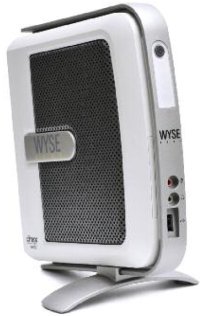VMware ships open source Linux VDI client
Feb 3, 2009 — by Eric Brown — from the LinuxDevices Archive — 10 viewsVMware is offering a free (LGPL-licensed) client for use with its VDI (virtual desktop infrastructure) thin client technology. The VMware View Open Client lets users access personalized, data center-hosted desktops from “almost any” device, VMWare claims.
VMware will continue to offer its commercially licensed View Client stack for Linux and Windows. The commercial stack adds features like USB redirection, multiple desktop sessions, and multimedia redirection.
Like the commercial version, though, the free, open source View Open Client enables a Linux desktop or thin client to connect to a remote Windows desktop managed by VMware's “View” virtualization software. The free client boasts a “full” command line interface, and is said to support secure tunneling using SSL, and two-factor authentication with RSA SecurID. The release is said to work with VMware Virtual Desktop Manager (VDM) 2.0 and 2.1, as well as VMware View Manager 3.0. Posted on Google Code, the client software is licensed under GNU Lesser General Public License version 2.1 (LGPL v 2.1).
VMware is billing its open source offering as a way for enterprises to cut deployment costs for desktop virtualization. It is also encouraging its client partners to use the source code to optimize their own products. Hardware companies announcing support for the release include Chip PC, Devon IT, HP, Novell, Sun, and Wyse.
The move also appears to be an attempt to head off increasing competition, including an expected onslaught against its virtualization business from Microsoft and its Hyper-V technology. (For more background on VMware, see farther below.)
 Thin clients such as the Wyse V10L Dual-DVI use VMware virtualization software (Click to enlarge) |
VMware quotes a recent Gartner report projecting that 50 million user licenses for hosted virtual desktops will be purchased by 2013, and that thin clients will account for about 40 percent of user devices for hosted virtual desktop deployment.
Stated Frank Bernard, director of U.S. operations, Chip PC, “With VMware View Open Client, we can broaden the range of thin clients certified for VMware View, increase the security of existing thin clients through secure tunneling, and reduce the cost of deploying virtual desktops.”
Background
VMware is known as a leader in x86 virtualization software for enterprise server systems. In recent years, several thin client vendors, including Wyse and Igel, have introduced Linux-compatible thin clients supporting VMware's Virtual Desktop Infrastructure (VDI). The technology is said to divide the host's physical resources — memory, storage, processor cycles, etc — into multiple virtual machines (VMs) that are made remotely accessible to thin clients. The goal is to make thin clients work more like full desktop PCs, while still offering some of the advantages of thin clients, such as centralized administration and lower electricity usage.
In November, VMware launched its first virtualization product aimed at mobile phones. The Linux-compatible Mobile Virtualization Platform (MVP) is based on technology that VMware acquired in October when it quietly bought French virtualization vendor Trango Virtual Processors. Due to ship in 2009, VMware MVP is a thin layer of software optimized to run efficiently on low-power, memory-constrained mobile phones, says the company.
In May 2007, VMWare contributed its “VMI” (virtual machine interface) to the 2.6.21 Linux kernel as a paravirtualization ABI (application binary interface). The ABI aims to let Linux modify itself for faster performance when run under a hypervisor.
Availability
VMware is offering Open View Client as source, obviously, and is also offering tested binary packages for Novell SLETC (SUSE Linux Enterprise Thin Client edition) and Debian 4.0r3. More information and free downloads should be available on this Google Code page .
This article was originally published on LinuxDevices.com and has been donated to the open source community by QuinStreet Inc. Please visit LinuxToday.com for up-to-date news and articles about Linux and open source.